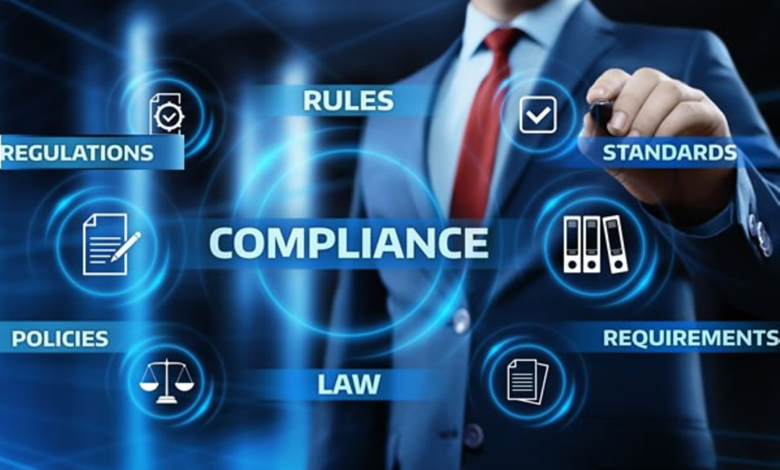Compliance Strategies for New Business Laws in 2024
Stay compliant in 2024 with these essential strategies for new business laws. Learn key steps to ensure your business adheres to regulations.

By 2024, compliance methods will be even more important as companies navigate the constantly changing terrain of new Business Laws. Organizations need to proactively modify their operations to comply with more strict regulatory frameworks as they become more expansive and tighter. Business Laws explore practical approaches that are adapted to the most recent Business Laws, offering businesses guidance on how to uphold compliance while promoting expansion and sustainability.
Business Laws must adopt a proactive approach to compliance in addition to understanding the word of the law in order to successfully navigate the intricate web of regulations in 2024. Every industry faces different difficulties, ranging from data protection to environmental sustainability, necessitating the development of flexible and strong compliance frameworks. Early adoption of strategic measures enables firms to optimise compliance as a driver of operational efficiency and market credibility, while simultaneously mitigating risks.
Compliance Strategies for New Business Laws in 2024
Major Regulatory Changes Affecting Businesses
The year 2024 brings significant shifts in regulatory frameworks across various industries. From data privacy laws to environmental regulations, Business Laws face a myriad of compliance challenges.
Industry-Specific Regulations to Watch
Different sectors will see specific regulatory changes. Understanding these nuances is crucial for Business Laws to stay compliant and avoid penalties.
Developing a Compliance Framework
Understand Regulatory Landscape
Begin by comprehensively understanding the regulatory requirements relevant to your industry and geographic location.
Identify Compliance Risks
Conduct a thorough risk assessment to pinpoint potential compliance vulnerabilities and prioritize areas needing immediate attention.
Establish Compliance Objectives
Define clear and measurable compliance objectives aligned with organizational goals and regulatory expectations.
Create Compliance Policies and Procedures
Develop comprehensive policies and procedures that outline specific compliance requirements and actions to be taken.
Assign Responsibility
Clearly define roles and responsibilities within the organization for overseeing and implementing compliance measures.
Training and Awareness Programs
Implement regular training programs to educate employees about compliance requirements, ethical standards, and reporting procedures.
Monitor Regulatory Changes
Stay vigilant about regulatory updates and incorporate necessary changes into your compliance framework promptly.
Implement Compliance Controls
Introduce internal controls and monitoring mechanisms to ensure ongoing compliance with regulatory standards.
Conduct Audits and Assessments
Regularly conduct internal audits and assessments to evaluate the effectiveness of your compliance framework and identify areas for improvement.
Promote a Culture of Compliance
Foster a culture where compliance is valued and integrated into everyday operations, encouraging accountability at all levels.
Response and Remediation Plans
Develop response and remediation plans to address compliance breaches swiftly and effectively, minimizing potential damage.
Engage Legal Counsel
Collaborate with legal counsel to interpret complex regulatory requirements and seek advice on compliance-related matters.
Use of Technology
Leverage technology solutions such as compliance management software for automating processes, data analysis, and reporting.
Regular Reporting and Documentation
Maintain detailed records of compliance activities, incidents, and corrective actions taken for transparency and audit purposes.
Continuous Improvement
Establish a framework for continuous improvement, regularly reviewing and updating compliance policies, procedures, and controls to adapt to evolving regulatory landscapes and organizational changes.
Establishing Compliance Policies
Effective policies outline expectations and procedures for compliance. They should be regularly updated to reflect new regulations and industry standards.
Training Employees on Compliance
Educating staff about compliance requirements enhances awareness and reduces risks of non-compliance incidents.
Implementing Monitoring and Reporting Systems
Utilizing advanced tools for monitoring ensures continuous compliance. Real-time reporting capabilities provide insights into potential risks and deviations.
Ensuring Legal and Ethical Standards
Comprehensive Compliance Policies
Develop and enforce robust compliance policies that encompass both legal requirements and ethical standards relevant to your industry.
Ethics Training
Implement regular ethics training programs for employees at all levels to promote awareness of ethical considerations and encourage ethical decision-making.
Whistleblower Protection
Establish mechanisms to protect whistleblowers who report unethical behavior or compliance violations, ensuring anonymity and non-retaliation.
Corporate Governance
Maintain strong corporate governance practices, including independent oversight, board accountability, and transparency in decision-making processes.
Risk Assessment
Conduct regular ethical risk assessments to identify potential ethical dilemmas or conflicts of interest within the organization.
Stakeholder Engagement
Engage with stakeholders, including customers, suppliers, and communities, to understand and address their ethical expectations and concerns.
Adherence to Codes of Conduct
Adhere to industry codes of conduct and standards, aligning organizational practices with accepted ethical norms and best practices.
Legal Compliance Reviews
Conduct periodic reviews by legal counsel to ensure adherence to all applicable laws, regulations, and contractual obligations.
Ethical Leadership
Foster a culture of ethical leadership from top management, setting a positive example and promoting integrity and ethical behavior throughout the organization.
Case Studies
Examining case studies of businesses navigating regulatory changes offers practical insights into effective compliance strategies.
Lessons Learned from Compliance Failures
Learning from compliance failures is crucial for organizations aiming to strengthen their regulatory adherence and mitigate future risks. These failures often highlight systemic weaknesses, inadequate oversight, or gaps in compliance training and communication. By analyzing these instances, businesses can identify root causes, whether they stem from procedural lapses, cultural issues, or external pressures. Case studies of compliance failures serve as powerful educational tools, illustrating the real-world consequences of non-compliance—such as legal penalties, reputational damage, and loss of stakeholder trust.
Future Trends in Business Law Compliance
Looking ahead, anticipating future regulatory trends allows Business Laws to prepare and adapt proactively.
Predictions for Upcoming Regulatory Changes
Forecasting regulatory shifts enables Business Laws to stay ahead of compliance requirements and industry standards.
Innovations in Compliance Technology
Advancements in technology streamline compliance processes, enhancing efficiency and accuracy in regulatory adherence.
Read More: Labor Law Changes: What Businesses Should Expect in 2024
Conclusion
In 2024, the regulatory environment for company legislation will require proactive and flexible compliance tactics to efficiently manage regulatory complications. Through the implementation of strong frameworks, stakeholder education, and technology-enabled monitoring and reporting, companies can guarantee not just compliance with existing standards but also readiness for emerging trends. The significance of integrity in compliance methods is emphasised by ethical concerns and lessons learned from previous mistakes. This enhances trust with stakeholders and protects against legal problems.
For organisations hoping to stay ahead of the curve, looking forward, predicting regulatory trends, and embracing advancements in compliance technology will be essential. In addition to reducing risks, ongoing compliance measure improvement establishes companies as industry leaders in morality and sustainability. Businesses may prosper in 2024 and beyond by emphasising compliance as a strategic asset, promoting a culture of integrity and resilience in an increasingly regulated global market.
FAQs
What are the consequences of non-compliance with new business laws in 2024?
Non-compliance can lead to hefty fines, legal disputes, damage to reputation, and even Business Laws closure in severe cases. It’s crucial for Business Laws to prioritize compliance to avoid these risks.
How can businesses stay updated with the latest regulatory changes?
Businesses can stay informed by regularly monitoring industry publications, attending regulatory seminars, engaging with legal counsel, and subscribing to regulatory update services.
What role does technology play in enhancing compliance strategies?
Technology aids in real-time monitoring, data analysis, and compliance automation, streamlining processes and ensuring accuracy in adherence to regulatory requirements.
How can small businesses implement effective compliance strategies without dedicated compliance teams?
Small businesses can start by appointing compliance champions within their teams, leveraging online resources for guidance, and outsourcing compliance functions to specialized firms when necessary.
What ethical considerations should Business Laws prioritize alongside legal compliance?
Beyond legal obligations, Business Laws should prioritize ethical conduct, transparency, and corporate social responsibility to build trust with stakeholders and contribute positively to society.











